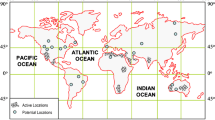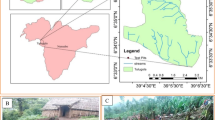Abstract.
The hazards associated with construction on sabkha soils may include strength reduction, soil subsidence as a consequence of the dissolution of salts, corrosive action caused by the salinity of the soil and groundwater, heave during salt recrystallization, flooding due to the low rate of infiltration into sabkha soils and groundwater rise in urbanized areas. As a consequence, extensive sabkha areas along both the Red Sea and the Arabian Gulf coasts have been left undeveloped. Some of the sabkha areas that have been built on are now suffering from one or more of these hazards. Nevertheless, sabkha terrain may be a useful resource for minerals and fresh water. The paper reports a trial to investigate the possible industrial utilization of the sabkha resources at Al-Lith on the Red Sea coast. The results indicate that by using a solar still the sabkha can provide a renewable source of fresh water, Na, K and Mg.
Résumé.
Les risques associés à la construction sur des sols de sebkha consistent en des diminutions de résistance et des tassements liés au processus de dissolution de sels, des actions corrosives résultant de la salinité des sols et des eaux souterraines, des soulèvements induits par les recristallisations de sels, des inondations dues aux faibles taux d’infiltration dans les sols de sebkha et aux remontées de nappes phréatiques dans les zones urbanisées. De ce fait, de grands espaces de sebkha le long de la mer Rouge et des côtes du golfe Arabique ne se sont pas développés. Quelques secteurs urbanisés dans ces zones souffrent maintenant d’un ou plusieurs des risques énoncés. Cependant, les zones de sebkha peuvent constituer des ressources en minéraux et en eau douce. L’article présente une tentative pour identifier le potentiel industriel des ressources de sebkha à Al-Lith sur la côte de la mer Rouge. Les résultats montrent que des techniques de désalinisation utilisant l’énergie solaire permettraient de produire de l’eau douce, Na, K et Mg.
Similar content being viewed by others
Author information
Authors and Affiliations
Additional information
Electronic Publication
Rights and permissions
About this article
Cite this article
Sabtan, .A., Shehata, .W. Problematic sabkha – a potential source of fresh water. Bull Eng Geol Environ 61, 153–159 (2002). https://doi.org/10.1007/s100640100133
Received:
Accepted:
Issue Date:
DOI: https://doi.org/10.1007/s100640100133




